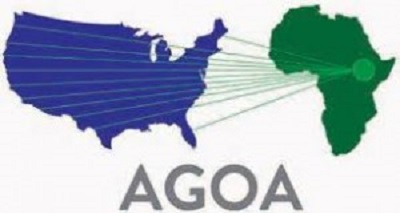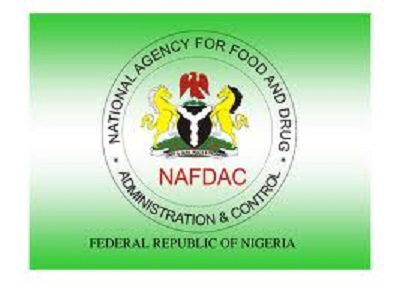Benefits Of AGOA To Nigerian Exporters
 Nigeria is yet to take full advantage of AGOA since it was enacted in May 18, 2000. Issues of political instability, inadequate infrastructure and poor macroeconomic management retarded the rate at which the country accesses the AGOA benefits.
Nigeria is yet to take full advantage of AGOA since it was enacted in May 18, 2000. Issues of political instability, inadequate infrastructure and poor macroeconomic management retarded the rate at which the country accesses the AGOA benefits.
The failure to diversify the country’s economy away from its overdependence on the capital intensive oil sector, which provides 95% of foreign exchange earnings and about 80% of its budgetary revenues, has greatly affected the agricultural sector.
Despite this lopsided development, Agricultural exports could still play an important role in Nigeria-US trade if properly harnessed and if efforts are made to diversify into higher value agricultural products. The US suppliers on the other hand could increase their scope by providing inputs like fertilizer and light machineries to Nigerian farmers.
Presently, Nigeria-US trade is dominated by energy and energy related products (oil and gas) while other sectors contribution remained insignificant. However, agricultural products exports to the US continued to increase over the years.
Exports of agricultural products to US in 2012 was valued at $80.83 2 million an increase of about 20% when compared with $58.78 million recorded in 2010. Other products that featured in Nigeria’s bilateral trade with US include forest products, chemicals and related products, textiles and apparel, minerals and metals machinery, transportation equipment, electronic products etc.
The bilateral trade profile offers immense opportunities for both countries to intensify dialogue towards increasing their trade relations. The U.S. have realised that the balance of trade is not in their favour (as a result of high importation of Crude Oil from Nigeria) and is therefore moving towards jacking up her investment in the Information Communication Technology (ICT), Telecommunications and other economic activities. Nigeria on the other hand is envisaging sharp reduction in US purchase of its oil and is working assiduously to diversify into other areas.
The U.S. Foreign Direct Investment (FDI) flow into Nigeria has increased from $5.2 million in 2000 to $8 billion in 2012. US is moving towards the diversification of its investments in Nigeria from oil and gas sector to other key non-oil sectors such as Power, Energy, Agriculture, Hospitality, Housing and Health Care among others. 3 Nigeria’s economy as a result of the widespread economic reform measures embarked upon by the present Government since its inception has expanded from 2001-2011 at an annual average rate of over 6.5 per cent.
This is well above the Sub-Saharan Africa’s average of 5.6per cent. From 2009 to 2011 Nigeria has had an average growth of 2.8 per cent. Nigeria is an emerging market and for the past decade, 2000 to 2011, Nigeria’s average growth rate has been the third fastest among the ten emerging markets countries behind only china and India.
The positive response of the Nigerian economy to the reform measures as witnessed by the consistent growth rate recorded by the economy, is an indication that with a little push, the country will generate the necessary economic climate and emerge as a principal exporter of diversified products to the U.S.
In this regard, it has been argued that Nigeria can significantly increase its non-oil exports under AGOA if the following measures are taken:
- Develop a national and state level AGOA strategies that are inclusive to determine where Nigeria’s competitive and comparative advantages lie outside oil and gas;
- Cultivate more land to increase agri-business;
iii. Move away from traditional exports of primary commodities and diversify into value-added products;
- Improve country’s ranking in the Doing Business Index to increase inflow of FDI;
- Promote good governance.
The Achievements of AGOA Minerals fuels and crude oil exports from AGOA beneficiary countries were valued at $53.8 billion in 2011, which represent a 21.5 per cent increase in AGOA exports from 2010 and a more than 500 per cent increase from the initial $8.5 billion in AGOA exports in 2001.
Over the course of the decade, petroleum products accounted for roughly 85 per cent of AGOA imports, in which Angola and Nigeria have consistently accounted for about 10 per cent of U. S imports of oil during the last decade.
Although some U.S. energy companies have trained local nationals in management and technical skills and put in place corporate social responsibility programs, such incentives have not created large number of new jobs for Nigeria. To make a fair assessment of AGOA, therefore, it is necessary to focus on the impact of increased non- energy AGOA imports into US and the role of these imports in poverty alleviation and economic development. In 2011, 11 years after AGOA was enacted, the number of countries exporting non-petroleum products to US had expanded to 22, more than half of those eligible. South Africa has remained a major exporter. Mauritius, Lesotho, Swaziland and Kenya exported the largest percentage of apparel and textiles to the U.S. Nigeria, whose main non-oil export products are agricultural failed to record any significant export to the US. Generally speaking, Agriculture has not played a central role in the accomplishments of AGOA.
Agriculture provides 70 per cent of employment in Sub-Saharan Africa and 30 per cent of the regions gross domestic product. Agricultural products on the other hand, are less than 1 per cent of AGOA exports. Apart from the fact that, the U.S. is not the most suitable destination for some agricultural goods from Africa (such as cut flowers) especially when compared with the European Union’s closer proximity, most African agricultural products lack sufficient value addition and some of them have been excluded from AGOA. 6 Sanitary and phyto-sanitary standards, though important for maintaining food quality and protecting human, plant and animal health, has imposed additional demands for Nigerian exporters as well as their counterparts in Sub-Saharan Africa. This is seen as a major limitation to export of agricultural products to US under AGOA. Other achievements of AGOA include job creation, increase in foreign direct investments, and efforts towards regional integration through the creation of regional value chains and corresponding increases in intra-African partnerships. Unfortunately, most of these chains have been concentrated in the apparel sector where Nigeria, for now, is not a principal player.
Government’s Promotional Strategy for AGOA
- Establishment of National Supplementation and Advisory Committee; – Developed export plan for the Nigerian economy. – Worked with US based Consultant, Manchester Trade Limited to evolve a comprehensive strategic export plan in Nigeria for the purpose of benefiting from AGOA;
- Conducted Market Surveys to develop product profiles from AGOA;
- Sensitisation Workshops/Seminars to create awareness of AGOA opportunities;
- Capacity Building workshop in collaboration with the USTR in Nigeria;
- Establishment of TIFA Council as well as Nigeria-US Joint Economic Partnership Committee (JEPU) – Created a direct air link and seaport connection for Nigeria to freight goods to and from Miami, the gateway to the Americas.
- Trade missions to several countries to promote active private sector participation.
- Product adaptations Programme for several agric products such as shea butter, frozen shrimps, footwear, garments, dried fish, cashew nuts, etc.
- Additional Measures to improve the standards and quality of made-in-Nigeria products through the efforts of NAFDAC, SON 8 and FIIRO. The introduction of mandatory Conformity assessment and 1509000 management system has improved made-in Nigeria products quality for the export market.
- Production of an export manual by the NCS to ensure compliance and increase AGOA benefits.
- Collaboration with WTO to introduce standards and Trade Development Facility (STDF) for some selected products such as Shea Butter and Sesame.
- The design of a new Trade Policy as part of efforts to clearly map out strategies to address various trade impediments in the country. The review will enable Nigeria to realise its objectives of growing the economy and attracting substantial local and foreign investment as well as increasing its share of the AGOA trade as well as global trade.
- The design of a new industrial master plan for Nigeria to increase the sector’s contribution to GDP. The policy will promote backward integration and industrial growth along value chains. 9 Bilateral Trade by Sector: United States – Nigeria Value (‘1000 dollars) / Year-to-date is January-March Sector 2010 2011 2012 2012 YTD 2013 YTD Agricultural products:







